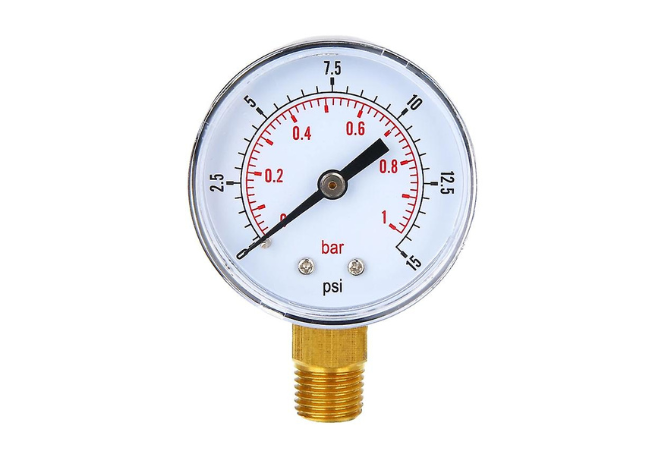How Do Mitre and Bevel Gears Revolutionize Power Transmission Systems?
In the world of mechanical engineering and industrial automation, precision gear systems play a vital role in transmitting torque, modifying speed, and adjusting the direction of motion. Among these, mitre and bevel gears are two essential types used extensively in machines requiring a right-angle gear arrangement. Whether you’re building a gearbox, conveyor system, or heavy-duty industrial setup, understanding these gear types is key to optimising performance and longevity.
What Are Mitre Gears?
Mitre gears are a special type of bevel gear that has a 1:1 gear ratio. Designed with teeth cut on the pitch surface of a cone, they allow the transmission of power between intersecting shafts positioned at 90 degrees. Unlike other gears, which may vary in speed and torque, mitre gears maintain equal speed and torque between the driver and driven shafts.
Key Characteristics of Mitre Gears
- Transmit motion at a 90-degree angle with a 1:1 ratio
- Offers smooth and quiet operation due to uniform load distribution
- Typically used in applications where direction change is needed without altering speed
- Precision-machined for high tolerance and minimal backlash
Typical Applications of Mitre Gears
- Right-angle drives in robotics and automation
- Medical devices and surgical instruments
- Inspection tools and optical systems
- Packaging and printing machinery
What Are Bevel Gears?
Bevel gears are conically shaped gear types designed to transmit power between shafts that intersect at an angle, commonly 90 degrees. Unlike mitre gears, bevel gears can be used in various gear ratios, allowing them to adjust torque and speed based on application needs.
Types of Bevel Gears
- Straight Bevel Gears – Simple design with straight teeth, used for low-speed applications
- Spiral Bevel Gears – Curved teeth for smoother, quieter operation at higher speeds
- Hypoid Bevel Gears – Used when shafts don’t intersect, enabling offset drives
Advantages of Bevel Gears
- Highly versatile in transmitting power between angular shafts
- Allows speed reduction or increase depending on the gear ratio
- Excellent torque handling for heavy-load machinery
- Available in various materials and configurations for tailored performance
How Do Mitre and Bevel Gears Differ?
While both gear types are used to transmit power between intersecting shafts, they differ in design and function. Bevel gears are a subset of gear types with a fixed 1:1 ratio and are strictly used for direction change. Bevel gears, on the other hand, offer more flexibility with different gear ratios and can be used for either increasing or decreasing speed and torque.
Comparison Highlights
- Mitre gears offer fixed 1:1 ratio; bevel gears come in multiple ratios
- Bevel gears offer higher torque capacity
- Mitre gears provide uniform speed in both directions
- Bevel gears offer more customisation based on machinery needs
Why Use Mitre and Bevel Gears in Power Transmission?
In power transmission systems, efficiency, precision, and adaptability are critical. Mitre and bevel gears are engineered to meet these exact standards. Their design enables the smooth transfer of mechanical energy, which is essential in modern industrial setups.
Benefits of Power Transmission Systems
- Optimised load distribution ensures longer operational life
- Compact designs suitable for space-constrained machinery
- Low vibration and noise levels enhance operational comfort
- Support for both low-speed and high-speed applications
- Reliability in continuous-duty environments
Integrating Mitre and Bevel Gears with Other Gear Types
To build more complex motion control and power transmission systems, engineers often combine mitre and bevel gears with other gear mechanisms such as Gear Racks, Worm Wheel Gears, Spur Gears, and Power Transmission Gears. These integrations provide versatile mechanical solutions for various industrial needs.
Gear Racks
- Used to convert rotary motion into linear motion
- Ideal for automation systems and CNC machinery
- Can be paired with bevel gears to enable angle-based positioning systems
Worm Wheel Gears
- Provide high torque with reduced speed in compact settings
- Offer non-reversible motion, which enhances safety
- Used alongside bevel gears in elevator systems, mixers, and hoists
Spur Gears
- Efficient for parallel shaft applications
- Easy to manufacture and cost-effective
- Frequently used with mitre gears in packaging and conveyor systems
Power Transmission Gears
- Designed for robust mechanical performance
- Can include a range of gear types, including helical, bevel, and spur
- Used in machinery requiring precise and durable power flow
Common Industries Using Mitre and Bevel Gears
The wide adaptability of mitre and bevel gears makes them an integral part of several industries. From automotive to robotics, these gears ensure smooth and precise motion control even under demanding conditions.
Industries Benefiting from These Gears
- Automotive: Steering systems, transmissions, and differential drives
- Aerospace: Flight control systems and gearboxes
- Industrial Automation: Robotics, conveyors, and assembly lines
- Marine Engineering: Propulsion systems and steering mechanisms
- Medical Equipment: Surgical tools and imaging devices
Material Selection for Mitre and Bevel Gears
The performance and longevity of gears greatly depend on the material used. High-quality gears are typically manufactured using materials such as hardened steel, stainless steel, brass, or even plastic, depending on the application environment.
Common Gear Materials
- Alloy Steel: Offers strength and durability for heavy-duty applications
- Brass and Bronze: Excellent for low-noise, low-wear settings
- Plastic (Nylon/Delrin): Ideal for lightweight, corrosion-resistant gear mechanisms
- Stainless Steel: Used where corrosion resistance and cleanliness are priorities
Final Thoughts
Mitre and bevel gears play a foundational role in designing efficient mechanical systems that require angular power transmission. Their compatibility with other gear types, such as Spur Gears, Gear Racks, Worm Wheel Gears, and Power Transmission Gears, further expands their application range across industries. Understanding their design, function, and integration possibilities can significantly improve system performance, reduce downtime, and increase mechanical precision.




Comments
Post a Comment